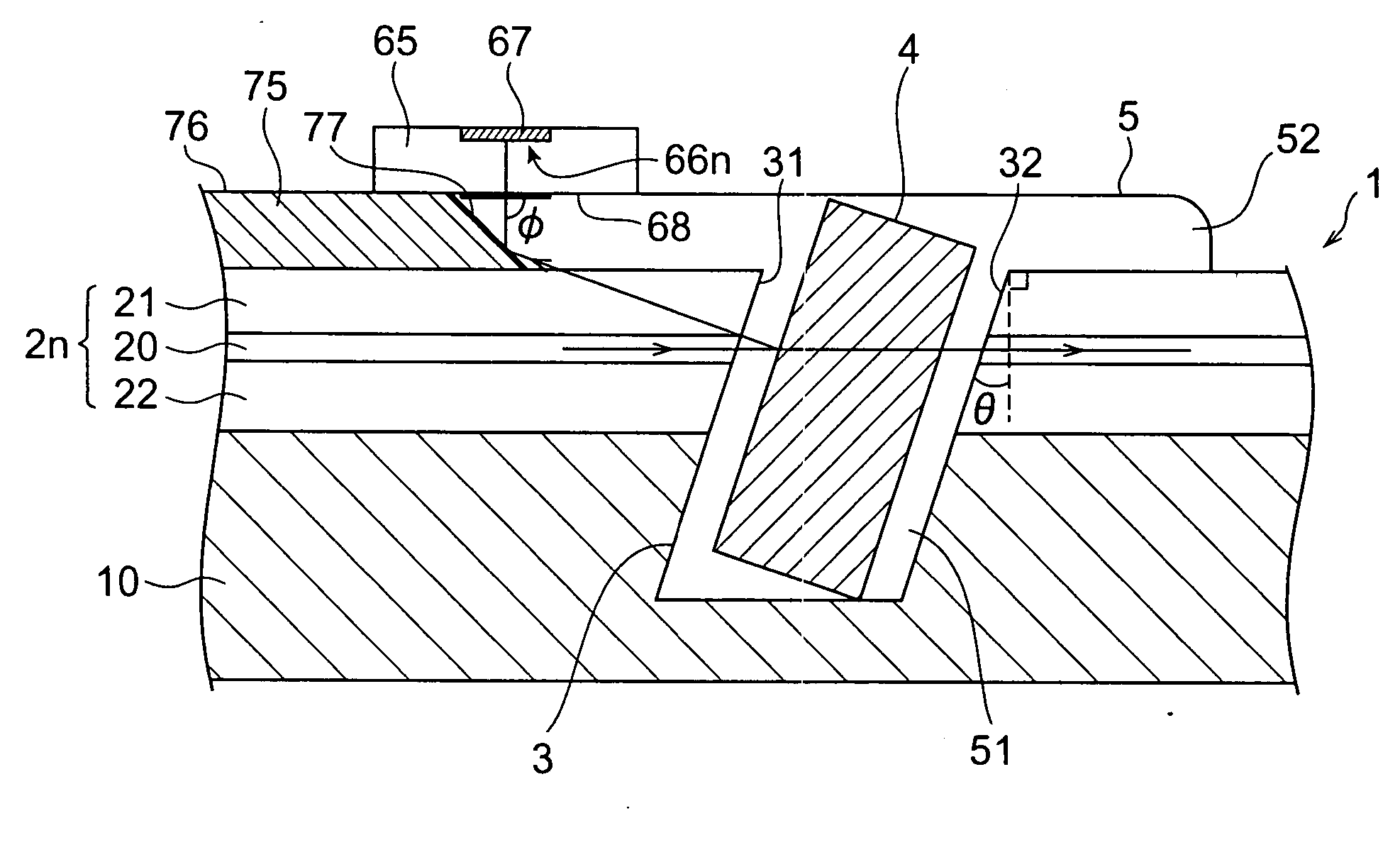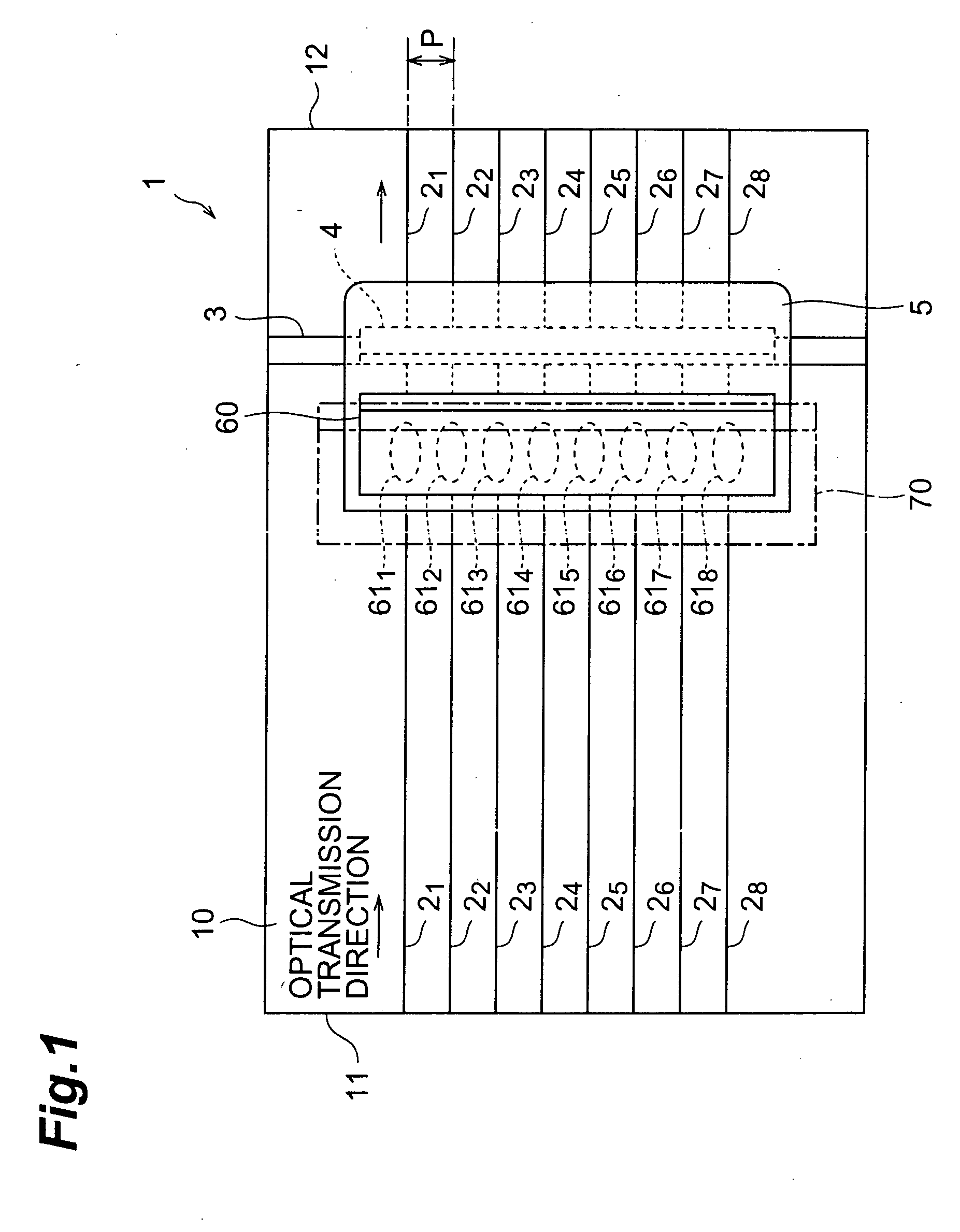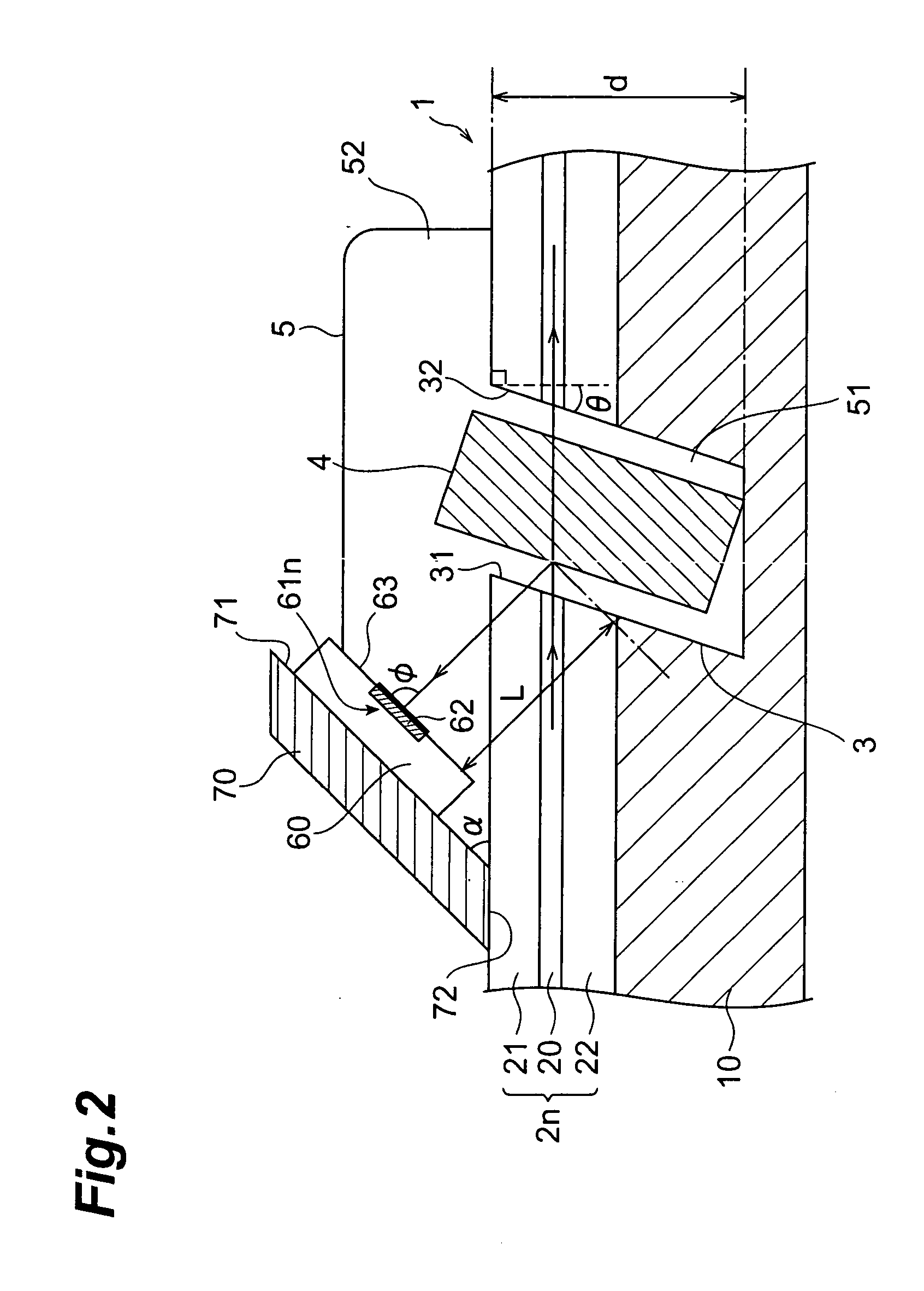Optical waveguide module
a technology of optical waveguides and modules, applied in the direction of optical waveguide light guides, instruments, optics, etc., can solve the problems of increasing the number of optical components, increasing the complexity of varying the photosensitivity of the reflected light at the photodetector, so as to simplify the structure and manufacturing process of the optical circuit.
- Summary
- Abstract
- Description
- Claims
- Application Information
AI Technical Summary
Benefits of technology
Problems solved by technology
Method used
Image
Examples
first embodiment
[0032]FIG. 1 is a plan view of a structure of an optical waveguide module in accordance with the present invention. The optical waveguide module comprises an optical circuit 1 which are constituted of a substrate 10, and 8 optical waveguides 21-28 (8 channels) disposed on the substrate 10. In this embodiment, for the optical waveguides 21-28, an optical waveguide of planar optical waveguide type, which are formed on the substrate 10, are employed.
[0033] Each of the optical waveguides 21-28 is formed parallel to each other at regular intervals along a predetermined optical transmission direction (the direction indicated by the arrowheads in FIG. 1) from input end 11 toward output end 12 of a planar optical waveguide type optical circuit 1. Also, at a predetermined portion with respect to the optical transmission direction of the planar optical waveguide type optical circuit 1, a groove 3, which crosses the optical waveguides 21-28, is formed.
[0034] Inside the groove 3, a reflection ...
fourth embodiment
[0121]FIG. 13 is a cross sectional view showing a structure of cross section of the optical waveguide module along the direction of the optical axis of an optical waveguides 2n (n=1−8). In FIG. 13, a portion including a groove 3, a reflection filter 4 and photodetector array 85 is shown enlarged. Also, in the constitution shown in FIG. 13, the planar optical waveguide type optical circuit 1 including optical waveguides 2n comprised of the lower clad 22, the core 20 and the upper clad 21, the groove 3, the reflection filter 4 and the filler resin 5 are the same as those in the constitution in FIG. 2.
[0122] The optical waveguide module according to this embodiment has almost the same constitution as that of the first embodiment shown in FIG. 1 and FIG. 2. Hence, in this embodiment, the plan view is omitted. To be more specific, the optical waveguide module according to this embodiment is different from the first embodiment in the constitution of the sub-mounting substrate or the like...
PUM
 Login to View More
Login to View More Abstract
Description
Claims
Application Information
 Login to View More
Login to View More - R&D
- Intellectual Property
- Life Sciences
- Materials
- Tech Scout
- Unparalleled Data Quality
- Higher Quality Content
- 60% Fewer Hallucinations
Browse by: Latest US Patents, China's latest patents, Technical Efficacy Thesaurus, Application Domain, Technology Topic, Popular Technical Reports.
© 2025 PatSnap. All rights reserved.Legal|Privacy policy|Modern Slavery Act Transparency Statement|Sitemap|About US| Contact US: help@patsnap.com



